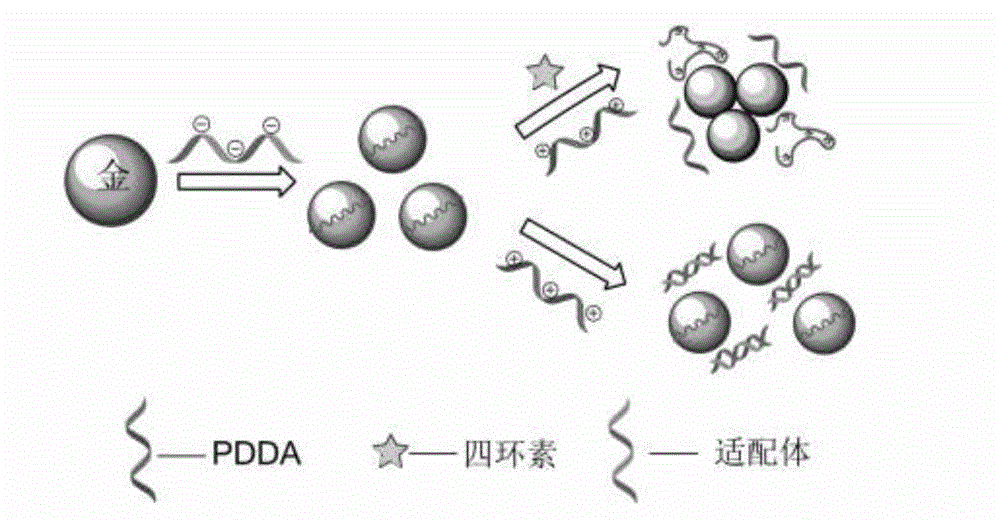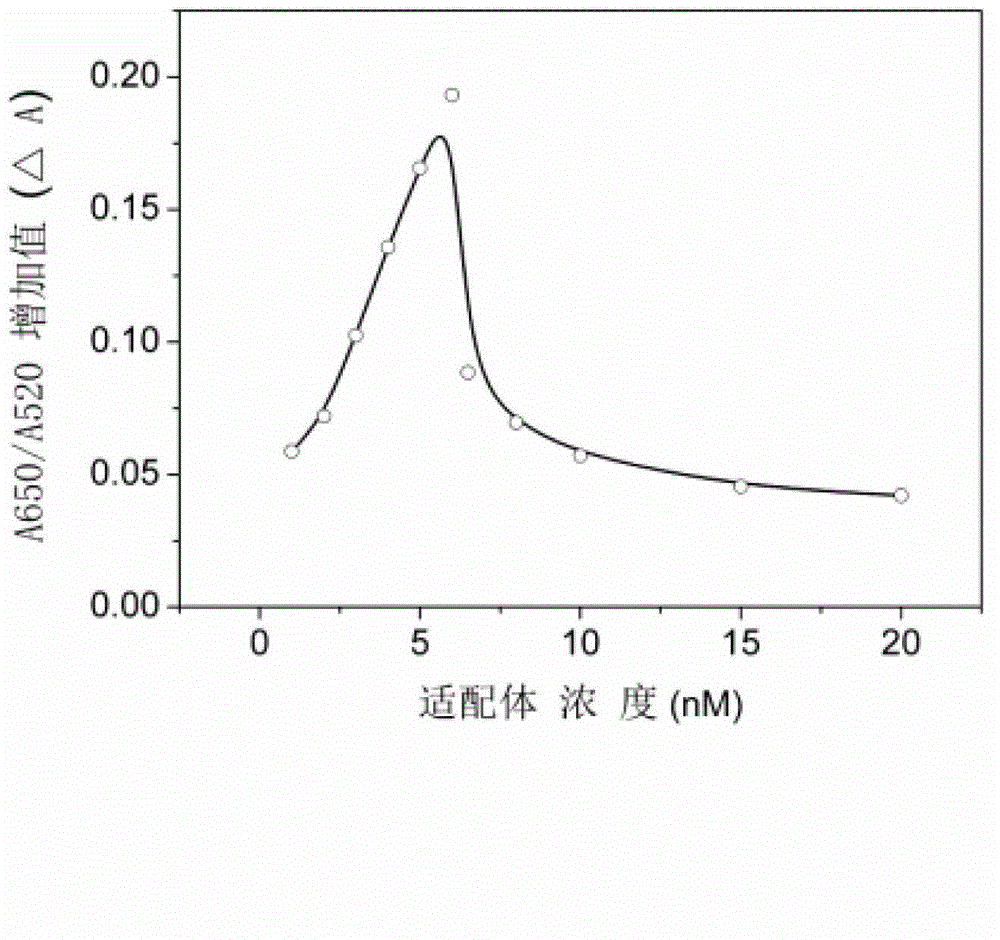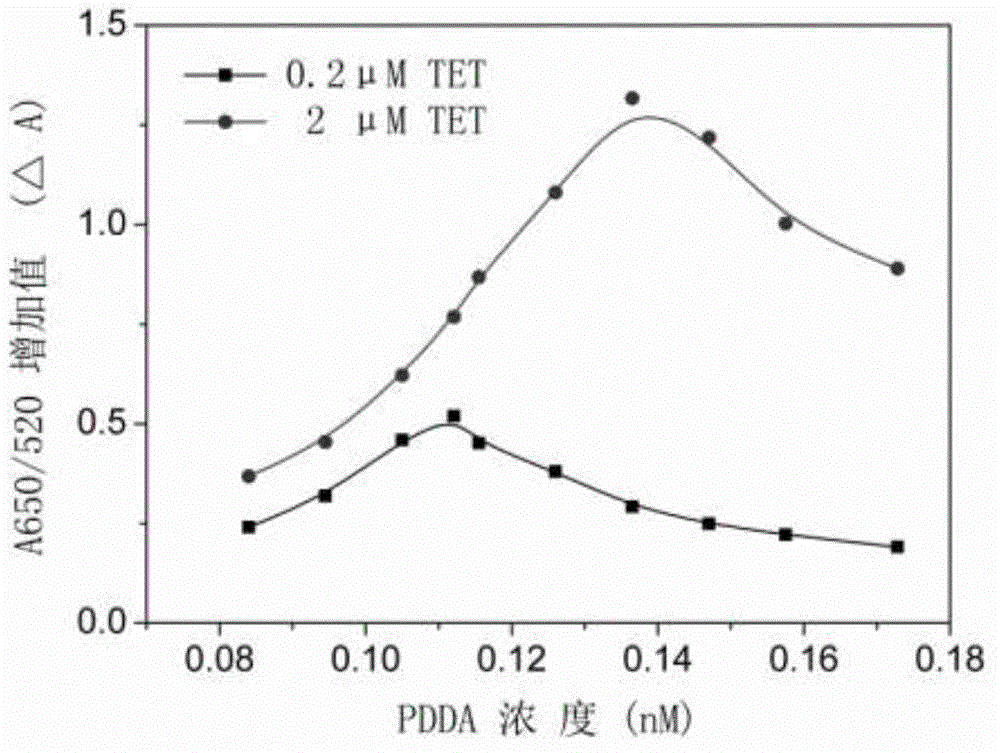Method for detecting tetracycline residues in milk and drinking water
A technology of tetracycline and drinking water, which is applied in the measurement of color/spectral characteristics, etc., can solve the problems of time-consuming and high cost, and achieve the effects of high reliability of results, wide application range and simple operation
- Summary
- Abstract
- Description
- Claims
- Application Information
AI Technical Summary
Problems solved by technology
Method used
Image
Examples
Embodiment 1
[0035] like figure 1 As shown, this embodiment includes the following steps:
[0036] Optimizing the concentration of aptamers in the system: add aptamers in the concentration range of 1-20nM to the nano-gold solution, and finally add 0.1365μM PDDA, and draw the difference between the ratio of the light absorption values at 650nm and 520nm measured by a microplate reader Curve, the aptamer concentration corresponding to the peak is 6nM.
[0037] Optimizing the PDDA concentration in the system: After incubating 6nM tetracycline aptamer with 0.2 and 2 μM tetracycline solution for 15 minutes, add 100 μL nano-gold, and finally add PDDA with a concentration range of 0.084-0.158nM for 5 minutes, and use a microplate reader to The measured difference between the ratio of light absorption values at 650nm and 520nm was plotted, and the peak corresponding to the PDDA concentration was 0.1121nM.
[0038] Prepare a tetracycline detection system of known concentration: Take 9 PE tube...
PUM
| Property | Measurement | Unit |
|---|---|---|
| particle diameter | aaaaa | aaaaa |
Abstract
Description
Claims
Application Information
 Login to View More
Login to View More - R&D
- Intellectual Property
- Life Sciences
- Materials
- Tech Scout
- Unparalleled Data Quality
- Higher Quality Content
- 60% Fewer Hallucinations
Browse by: Latest US Patents, China's latest patents, Technical Efficacy Thesaurus, Application Domain, Technology Topic, Popular Technical Reports.
© 2025 PatSnap. All rights reserved.Legal|Privacy policy|Modern Slavery Act Transparency Statement|Sitemap|About US| Contact US: help@patsnap.com



